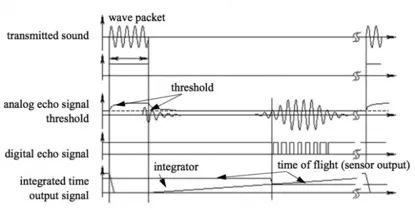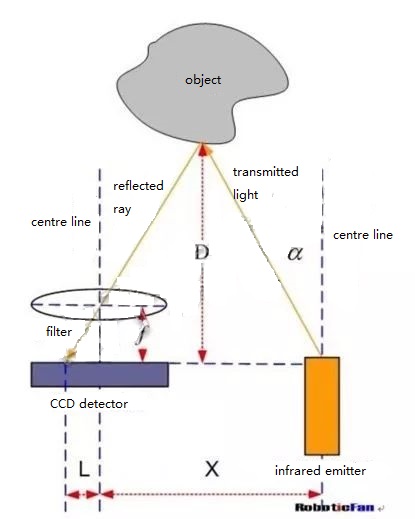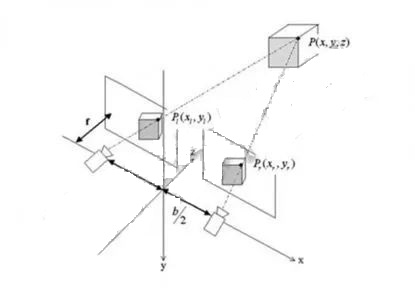Ⅰ. The standard configuration of smart factory
People think of automation, intelligence, industrial robots, and the industrial Internet of Things when they think of smart factories. So, what are the common smart factory configurations?
The controller is the brain of the smart factory. A program counter, instruction register, instruction decoder, timing generator, and operation controller make up the system. It is a "decision-making body" that issues commands as well as organizes and directs the complete computer system's activity. PLCs, industrial computers, and other controllers are commonly utilized in smart factories.
An industrial robot is a mechanical device that automatically performs work.It may take human directions, perform pre-programmed programs, or follow instructions created using artificial intelligence technologies.
Servo motor is the muscle that drives the automated factory, as it is the engine that controls the operation of mechanical components in the servo system. The input signal controls the servo motor's rotor speed, and it's employed as an actuator in an automatic control system that can convert the electrical signal into angular displacement or angular velocity output on the motor shaft.
Sensors give smart factories a tactile feeling and is the main connection in achieving autonomous detection and control. It can perceive the measured data and, according to a set of rules, convert the data into electrical signals or other forms of information output. Various sensors are required in the automated manufacturing process to monitor and control various parameters in order for the equipment to function normally or optimally and for the products to meet the highest quality standards.
The frequency converter is the smart factory's switch, which is made up of a rectifier (AC to DC), filtering, inverter (DC to AC), brake unit, drive unit, and micro-processing unit. It controls the AC motor by adjusting the frequency of the motor's working power source using frequency conversion and microelectronics technology.
A solenoid valve is an electromagnetically controlled industrial device that may work with a variety of circuits to provide the desired control. It is the smart factory's switch and belongs to the actuator.
Industrial cameras are the eyes of smart factories, and they're essential parts of machine vision systems. Instead of human eyes, industrial cameras are used to make measurements and judgments on the machine assembly line, turn them into image signals using digital image capture targets, and send them to a specialized image processing system. On the basis of the discrimination results, the imaging system performs various operations on these signals, extracts target features, and controls the actions of the equipment on site.
Instrumentation is the smart factory's regulation system for detecting, measuring, observing, and calculating various physical quantities, material components, and parameters. Relevant instruments and meters are required, for example, to monitor pressure, liquid level, flow, temperature, and other parameter values required by some control procedures.
Automation software is the smart factory's beating heart. For example, without being overseen, the SCADA data gathering and monitoring system may arrange and automate the manufacturing process.
The control cabinet is the smart factory's central system. Electrical, frequency conversion, power supply, water pump, and other control cabinets are included in the smart factory and may perform various control duties.
The crucial component of the smart factory-industrial robots will be examined in detail in the following sections.
Ⅱ. What technologies are involved in industrial robots?
Robotic automation is a rapidly developing field. Industrial robots have become commonplace in companies all around the world in just a few decades.
Industrial robots can help industries save money, enhance productivity, and maintain product quality by overcoming the effects of adverse environments on production, reducing manual labor, and ensuring worker safety.
An industrial robot is a machine device with several degrees of freedom that can perform work and execute numerous activities automatically based on its own power and control capabilities. The mechanical part, the sensor part, and the control part make up the device. There are six parts to these three segments. Sub-systems. They are as follows:
Drive system: To move the robot, place a transmission device for each joint, or degree of freedom of movement.
System of mechanical structure: It is made up of three parts: the body, the arm, and the end manipulator. Each major piece has several degrees of freedom, constituting a mechanical system with multiple degrees of freedom. The arm is made up of three parts: the upper arm, lower arm, and wrist. The end manipulator is a crucial component that is directly attached to the wrist. It could be a claw with two or more fingers, a spray gun, or a welding gun, for example.
Sensing system: Improve the robot's mobility, flexibility, and intelligence by gathering useful information from internal and exterior environmental circumstances.
A system that realizes the mutual connection and coordination between the robot and the equipment in the external environment is known as a robot-environment interaction system.
A device that connects humans and robots and engages in robot control is known as a human-computer interaction system.
Control system: It regulates the robot's actuator to accomplish the prescribed movement and function based on the robot's work instruction software and the signal received from the sensor.
Ⅲ. Sensors commonly used in industrial robots
In the realm of industrial automation, sensors are required to supply the necessary data for robots to do their tasks appropriately.
According to a research, the worldwide industrial robot sensor market would develop at an annual compound growth rate (CAGR) of over 8% by 2021. Another estimate stated that by 2027, the vision system alone will have a market worth 5.7 billion dollars, and the force sensor market will be worth more than 6.9 billion dollars for robotic sensing applications such as consumers and automobiles.
The most commonly used sensors in industrial robots are listed below.
Two-dimensional vision sensor
A camera with two-dimensional vision can detect moving objects and arrange parts on a conveyor belt, among other things. Many smart cameras are capable of detecting parts and assisting the robot in determining its location. Based on the information collected, the robot can alter its behaviors properly.
Three-dimensional vision sensor
To identify the object's third dimension, the three-dimensional vision system needs to contain two cameras or laser scanners with distinct angles. Part choosing and placing, for example, involves using 3D vision technology to identify things and build 3D images, as well as analyzing and selecting the optimum selection strategy.
Force/torque sensor
If the vision sensor provides eyes for the robot, the force/torque sensor provides a feeling of touch. The robot detects the end effector's strength using force/torque sensors. In most circumstances, the force/torque sensor is placed between the robot and the fixture, allowing the robot to monitor all forces supplied back to the fixture.
Applications like assembly, manual guidance, education, and force limiting can all be realized with force/torque sensors.
Collision detection sensor
Thistype of sensor comes in a variety of shapes and sizes, with the primary purpose of providing a safe working environment for operators, which collaborative robots require the most.
Some sensors could be a tactile recognition system that detects pressure on a soft surface and provides messages to the robot to limit or stop its movement.
Some sensors can even be incorporated inside the robot itself. Accelerometer feedback is used by some companies, whereas current feedback is used by others. When the robot detects an anomalous force in either situation, it initiates an emergency stop to ensure safety.
If you want industrial robots to collaborate with humans, you must first ensure that workers are safe. These sensors come in a variety of shapes and sizes, ranging from cameras to lasers, and their role is to provide information about the robot's surroundings. When someone enters a specified area/space, some safety systems can be programmed to decelerate the robot, and if the human continues to approach, the robot will stop working.
A laser safety sensor on an elevator door is the most basic example. When the laser identifies an obstruction, the elevator door will come to a complete stop and retreat in order to avoid colliding.
Other sensors
There are numerous sensors available on the market that are appropriate for various applications. Sensors that track the seams, for example.
Tactile sensors are gaining in popularity as well. This sort of sensor is commonly found on grippers and is used to detect and feel what is being gripped. Sensors are typically able to detect force and obtain force distribution in order to determine the exact position of an object, allowing the end effector's gripping position and grasping force to be controlled. Tactile sensors that sense changes in heat are also available.
Cameras, infrared, sonar, ultrasound, radar, and lidar are among the vision and proximity sensors required for autonomous cars. Multiple cameras can be employed in various instances, especially for stereo vision. The robot can assess the size, recognize the object, and measure its distance by combining these sensors.
Radio frequency identification (RFID) sensing can generate identifying codes and allow licensed robots to access additional data.
Industrial robots use microphones (acoustic sensors) to accept spoken orders and distinguish unusual sounds in their surroundings. If apiezoelectric sensor is included, it can detect and reduce vibration-induced noise, as well as prevent the robot from misinterpreting speech orders. Advanced algorithms may even allow robots to recognize the speaker's emotions.
The robot's self-diagnosis includes temperature detection, which can be used to determine its surroundings and avoid potentially dangerous heat sources.
The robot can analyze, adjust, and detect problems in its environment using chemical, optical, and color sensors.
Stability is a critical concern for humanoid robots that can walk, run, and even dance. In order to deliver precise robot position data, they require the sametype of sensor as smartphones. A 9-degree-of-freedom (9DOF) sensor or inertial measurement unit (IMU) with a 3-axis accelerometer, 3-axis gyroscope, and 3-axis magnetometer is used in these applications.
Sensors are essential for achieving software intelligence. Many sophisticated tasks are impossible to carry out without sensors. They not only carry out difficult operations, but they also make sure that they are well-controlled throughout the process.
Ⅳ. Which sensors are mainly used for obstacle avoidance of industrial robots?
To avoid impediments, mobile robots must acquire real-time information about their surroundings via sensors, including size, shape, and location information. Vision sensors, laser sensors, infrared sensors, and ultrasonic sensors are some of the most common sensors used to avoid obstacles.
Ultrasonic sensor
The ultrasonic sensor's main idea is to measure the time of flight of ultrasonic waves. The distance is calculated using the formula d=vt/2, where d is the distance, v is the sound speed, and t is the flight time.

The ultrasonic sensor signal is schematically depicted in the diagram above. To create a wave packet, a piezoelectric or electrostatic transmitter generates an ultrasonic pulse with a frequency of tens of kHz. The device detects the reverse sound wave above a specific threshold and then calculates the distance using the measured flight time. Ultrasonic sensors typically have a limited action range. The normal effective detection distance is a few meters, however there will be a tens of millimeters-wide detection blind zone. Ultrasonic sensors are extensively used sensors in mobile robots because to their inexpensive cost, simple implementation method, and mature technology.
Infrared sensor
The principle of triangular ranging is used in general infrared ranging. An infrared beam is emitted by the infrared transmitter at a specific angle. The light will be inverted after colliding with an object. After detecting the reflected light, the geometric triangle relationship on the structure can be used to compute the object's distance D.

The value of L in the following figure will be rather large when the distance D is close enough. Even if the object is quite close, if it exceeds the detection range of the CCD, the sensor will not detect it. When the object distance D is very large, the L value is quite small, and the measurement precision suffers. As a result, the measurement distances of conventional infrared sensors are relatively modest, smaller than ultrasonic, and long-distance measurement has a minimum distance restriction. Furthermore, infrared sensors are unable to distinguish distances between clear or virtually black objects. Infrared sensors, on the other hand, have a higher bandwidth than ultrasound sensors.
laser sensor
Common lidar is based on the time of flight (ToF, time of flight), which measures the distance d=ct/2 by measuring the laser's flight time, similar to the ultrasonic ranging formula, where d is the distance and c is the speed of light, and T is the time interval between transmission and reception.

Measuring the phase shift of reflected light offers a simpler solution. As indicated in the diagram above, the sensor emits a given amplitude of modulated light at a defined frequency and detects the phase shift between the emitted and reverse signals.

The modulation signal's wavelength is lamda=c/f, where c is the light speed and f is the modulation frequency. The distance can be determined using lamda*theta/4pi after measuring the phase shift difference theta between the emitted and reflected beams, as illustrated in the picture above.
Vision sensor
Binocular vision, depth cameras based on TOF, depth cameras based on structured light, and other computer vision methods are all extensively utilized.
The structured light emitted by the depth camera will produce a relatively random but fixed spot pattern. Because the distance between the camera and the position caught by the camera is different, the light spot hits the object. Calculate the distance between the object and the camera by first calculating the variance between the spot and the calibrated standard pattern at various positions using the camera position, sensor size, and other factors.

Binocular vision distance measurement is essentially a triangle distance measurement method. Because the two cameras' positions are different, just like a person's two eyes, the objects they perceive are different. During imaging, the identical point P observed by the two cameras will have different pixel locations. At this moment, triangulation can be used to determine the distance between this location and another.
Ⅴ. The development trend of industrial robots in the industry 4.0 era
Six main industrial robot development trends are predicted by the Robot Industry Association of America (RIA).
Application of Industrial Internet of Things (IIoT) technology: Smart sensors will be used by robots at the front of the production line to acquire data that manufacturers have hitherto been unable to obtain.
Prioritize industrial network security: as more robots become connected to internal systems, the threat of network security grows. To ensure safe and reliable production, manufacturers must address flaws in the manufacturing process and enhance investment in network security.
Big data analysis becomes a competitive advantage: On the production floor, robots will become one of the primary sources of data. In order to take effective actions to improve the company's competitive edge, manufacturers must create a system to organize and evaluate all received data.
Implement an open automation architecture: As the use of robotic automation becomes increasingly common, so does the requirement for an open automation architecture. Industry organizations and large-scale participants will collaborate to produce standards and open documentation. Integration of robots will be simpler, and compatibility will improve.
Increase in virtual solutions: Virtual solutions will play a significant role in the development of industrial robots.
Collaborative robots will become increasingly popular because they can work safely around people and are typically less expensive than industrial robots. Manufacturers with rigorous return on investment requirements will deploy more collaborative robots as collaborative robots become more capable in demanding industrial conditions.
Ⅵ. Concluding remarks
"Industry 4.0" stresses automation and information technology integration. Industrial robots, as key players in the automated production process, have a direct impact on the level of automation in the industry. The application sites and application needs of robots are getting increasingly complicated and demanding as the complexity and precision of industrial goods continue to rise. Robotic computing platforms have evolved beyond standard PC and embedded systems to include smartphones and tablet computers. Sensors used by robots in other mobile devices have progressed from simple photoelectric switches and touch switches to high-end sensors like touch, sound, and vision. The original "pulse + direction" mode of communication between the robot servo system and the control system has also been replaced. Communication cables have evolved into a variety of field buses that provide more efficient transmission and a bigger data volume of communication. The robot control system is evolving in a more open direction. Robots have also been able to better integrate into manufacturing applications as a result of technological advancements such as the industrial Internet of Things, big data analysis, and virtualization.
-
Phone
18126161077 -
Wechat





